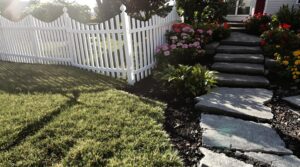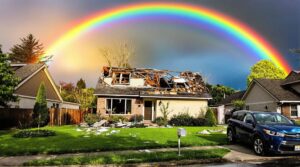Property damage liability coverage is a mandatory component of automobile insurance that provides financial protection against damages to others' property in the event of an accident. It covers repair costs for damages to another person's property, including vehicles, buildings, and structures. This coverage is essential for financial safety, as it prevents out-of-pocket expenses by covering costs up to policy limits. Understanding the details of property damage liability coverage, including its limits and requirements, can help guarantee adequate protection and peace of mind.
Key Takeaways
- Property damage liability coverage is a mandatory auto insurance component that offers financial protection against damages to others' property.
- This coverage pays for the repair costs of damages to another person's property, including vehicles, buildings, and structures.
- Property damage liability coverage is essential for financial safety during unexpected claims and prevents out-of-pocket expenses up to policy limits.
- This coverage extends to business property damage, lost revenue during repairs, and includes repair costs, legal fees, and expenses related to claims.
- Having property damage liability coverage maintains financial stability, avoids financial hardship, fines, and penalties, and provides peace of mind in case of accidents.
Understanding the Basics of Property Damage Liability Coverage
As a fundamental component of automobile insurance, property damage liability coverage is essential for drivers to comprehend, particularly in light of its mandatory status in most states.
Property damage liability insurance offers critical protection against financial strain by covering repair costs for damages caused to another person's property while driving.
Key aspects of this coverage include its definition, policy limits, coverage scope, and exclusions. The coverage benefits provide financial safety by shielding drivers from unexpected claims.
Claim procedures involve the property owner contacting the at-fault driver's insurance company to initiate the claims process. The insurer assesses the damage and pays for repairs up to the policy's property damage liability limits.
Drivers should recognize the importance of understanding property damage liability coverage, including its requirements, exclusions, and benefits, to guarantee compliance with state laws and adequate financial protection on the road.
Carefully evaluating coverage benefits and claim procedures.
What Does Property Damage Liability Insurance Cover?

Property damage liability insurance encompasses a range of damages to third-party properties, including vehicles, buildings, structures, and public property.
This coverage also extends to specific expenses, such as repair costs for damaged vehicles and legal fees associated with property damage claims.
Understanding the types of covered damage and limits of liability coverage is essential for policyholders to navigate the complexities of property damage liability insurance effectively.
Types of Covered Damage
Damage to tangible assets is a key component of property damage liability coverage. Property damage liability insurance offers a wide range of covered damages, including damage to vehicles, buildings, and other structures, as well as public property and landscaping features.
Specific examples of covered damage include car accidents, destruction of property, debris removal, and damage to public infrastructure. Additionally, business property damage, including lost revenue due to closures for repairs, is also covered.
The extent of these covered damages is determined by the policy's liability limits, which can vary depending on the specific insurance policy. Policyholders should carefully review their policies to understand the full scope of their coverage and liability limits in the event of property damage. Public adjusters can assist property owners in understanding their coverage and navigating the claims process effectively.
Limits of Liability Coverage
Understanding the extent of property damage liability coverage requires examining the associated limits of liability, which dictate the maximum amount an insurance policy will pay for damages in the event of an accident.
Each state sets its own minimum liability coverage limits, and policyholders can choose higher coverage limits for increased financial protection.
Key aspects of liability limits include:
- State-mandated minimum requirements, which vary greatly across states, such as $5,000 in California and $25,000 in Alabama and Georgia.
- The possibility of choosing higher coverage limits, which typically result in higher premiums.
- Coverage flexibility offered by insurance providers, allowing policyholders to adjust coverage limits to suit individual circumstances and balance coverage with affordability.
Examples of Covered Expenses
In the event of an accident, a driver's property damage liability insurance can help alleviate the financial burden of various expenses. This coverage includes a range of unique scenarios, including damage to vehicles, structures, landscaping, and government property.
Practical implications of this coverage include compensation for repairs or replacement of another person's vehicle, as well as damage to buildings, fences, and other structures. Additionally, property damage liability insurance may cover damage to personal property, such as bicycles or garden equipment, and public property, including street signs and benches.
The coverage also extends to accidental damage, such as hitting a mailbox or a parked bicycle, and may include towing and storage costs for damaged vehicles. This extensive coverage helps mitigate the financial consequences of an accident.
Types of Damages Included in Property Damage Liability Coverage
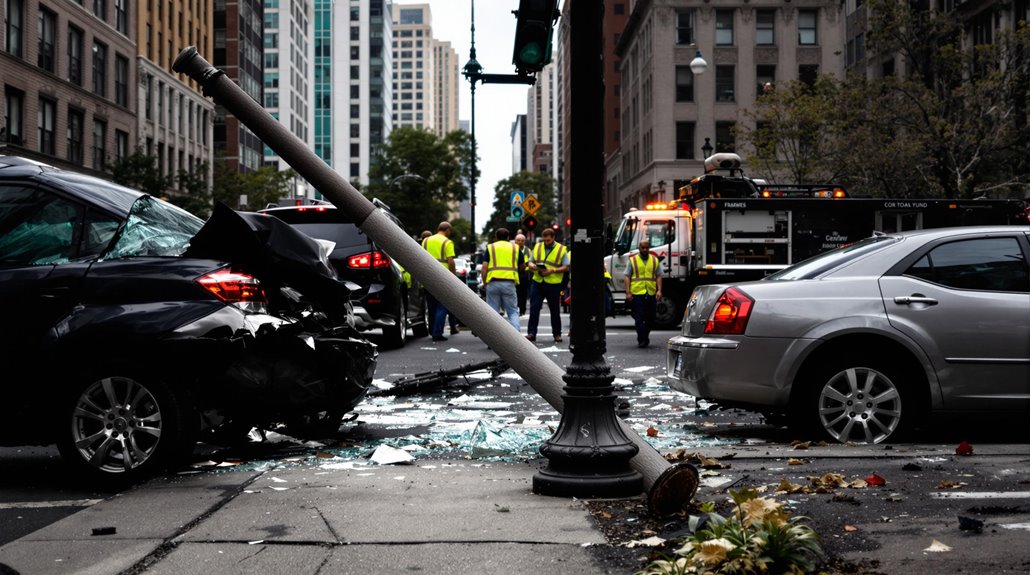
Property damage liability coverage encompasses a range of damages to various types of property, including vehicles, structures, buildings, landscaping, and other forms of property.
The scope of coverage includes costs for repairs, replacement, and removal of debris, as well as related expenses such as towing and legal fees.
Understanding the specific types of damages included in property damage liability coverage, as well as the associated limitations and exclusions, is essential for policyholders to navigate the complexities of this coverage.
Covered Property Types
The scope of property damage liability coverage encompasses a broad range of property types, providing financial protection against various types of damages. Understanding the different property classifications and coverage specifics is essential for individuals seeking to mitigate financial loss resulting from accidents or other unforeseen events.
Property damage liability insurance typically covers the following types of property:
- Vehicles, including cars, trucks, vans, motorcycles, and bicycles, as well as damage to vehicle parts
- Structures, including buildings, fences, walls, bridges, roads, lamp and sign posts, and government property
- Other property, including trees, landscaping, personal property, and damage resulting from debris removal, water, and fire damage
Limitations and Exclusions
While property damage liability coverage encompasses a broad range of property types, not all damages are included under this coverage. There are specific limitations and exclusions that policyholders must be aware of to avoid claims disputes and coverage misconceptions.
For instance, damage to the policyholder's own property, including their vehicle, is typically excluded from coverage. Additionally, intentional acts causing property damage and property damage resulting from certain business operations or activities may also be excluded.
Coverage limits, which vary by state, also apply, and policyholders must adhere to these minimums to avoid potential consequences. Understanding these limitations and exclusions is essential for policyholders to guarantee they have adequate protection against property damage claims and to avoid potential disputes. High-risk activities often require additional liability coverage to ensure comprehensive protection against potential damages.
Property Damage Liability Coverage Limits and Requirements

How much property damage liability coverage is sufficient for drivers? State variations in minimum limits often lead to coverage misconceptions among policyholders. While each state sets specific requirements, these minimums may not be enough to cover typical damage costs.
Factors to evaluate when choosing limits include:
- The value of one's vehicle and potential damage costs
- Protection against financial losses for individuals with high net worth
- Avoiding paying out of pocket for damages exceeding the policy limit
Higher limits provide better protection in major crashes involving expensive vehicles. Limits should be high enough to cover average damage costs, which can be substantial.
For instance, the average cost of damage from a crash is approximately $5,700 per vehicle. With varying state minimum requirements, drivers should contemplate purchasing higher limits than the state minimum to guarantee adequate coverage.
Policies usually have a "per accident" limit with no deductible.
Importance of Having Property Damage Liability Coverage
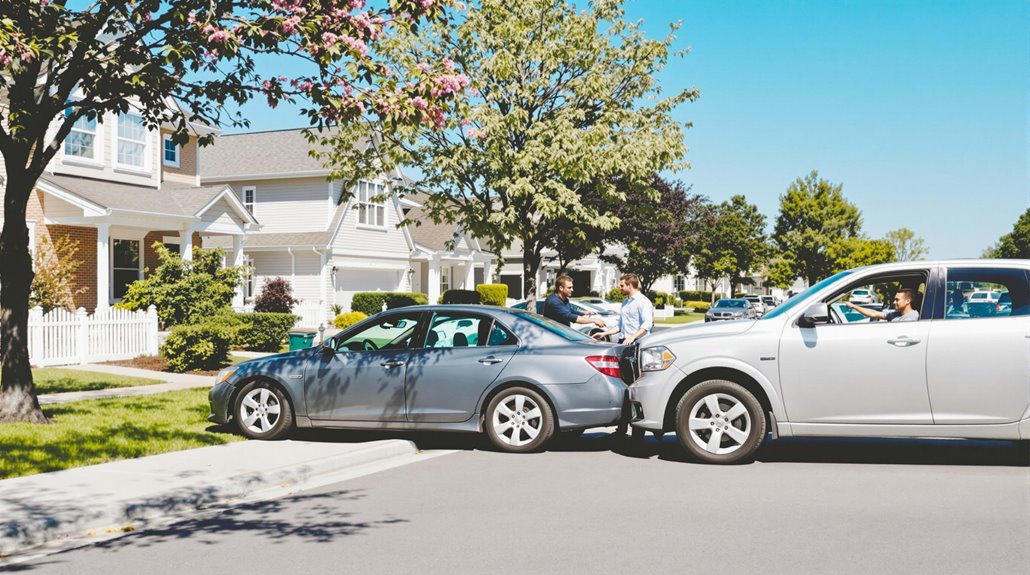
Property damage liability coverage serves as a significant component of an individual's insurance policy, offering financial protection against potential damages to others' property. This coverage is essential for maintaining financial stability, as it prevents out-of-pocket expenses by covering costs up to policy limits.
Without property damage liability coverage, individuals risk facing financial hardship, fines, and penalties, as well as damage to their credit score.
Having property damage liability coverage also guarantees legal compliance, as it is mandated by law in most states. In addition, purchasing more coverage than state requirements offers additional financial protection and reduces legal risks.
By having sufficient coverage, individuals can avoid legal consequences, such as lawsuits and financial liability. Overall, property damage liability coverage provides peace of mind and financial security, making it a critical component of an individual's insurance policy.
How Property Damage Liability Claims Are Handled
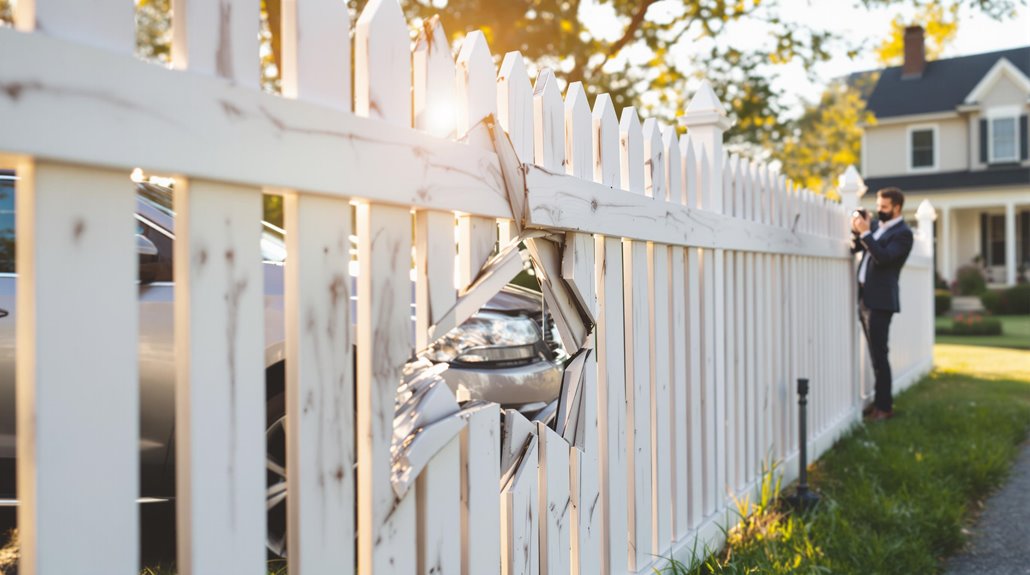
The process of handling property damage liability claims is a multifaceted one, involving various stages and stakeholders. Upon notification, the insurance company requires detailed documentation, including type of claim, description of damage, and policy number, for the initial contact.
To guarantee a seamless process, the following steps are taken:
- Securing the property to prevent further damage and potential injury to third parties
- Conducting a thorough evaluation by an adjuster to assess damage and determine liability
- Collecting critical evidence, such as photographs and witness statements, to support the claim
The adjuster's evaluation plays an essential role in determining the validity and value of the claim.
Claim documentation is thoroughly reviewed to assess the extent of damage and policy coverage. This meticulous process enables the insurance company to make an informed decision, ultimately leading to a fair settlement or further negotiations.
Working with public adjusters can significantly increase settlement amounts by 30-50% compared to handling claims independently.
Factors That Affect Property Damage Liability Coverage Premiums
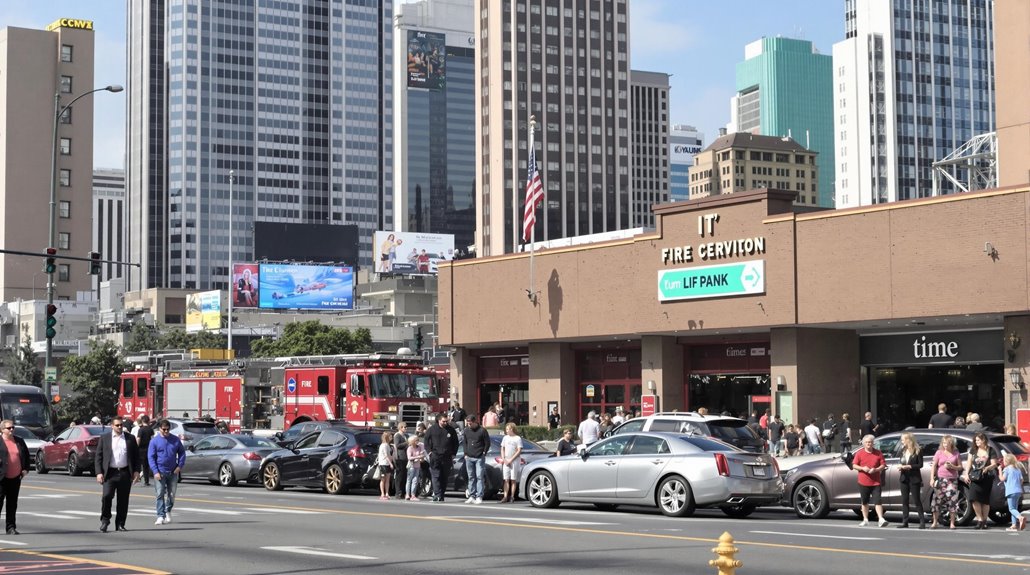
While the process of handling property damage liability claims is vital to ensuring fair settlements, another important consideration is the factors that influence the premiums associated with this type of coverage.
Location impacts play a significant role in determining premiums, with areas prone to natural disasters and urban areas with high construction costs and crime rates typically incurring higher premiums.
Proximity to fire stations or fire hydrants, on the other hand, can lower premiums.
Policyholder demographics, such as driving history, age, and credit history, also affect premium costs. Additionally, policy specifics like deductible amounts, coverage limits, and type of vehicle insured influence premiums.
External factors, including state regulations, economic conditions, and industry trends, also contribute to premium variations.
Understanding these factors is essential for policyholders to make informed decisions about their property damage liability coverage.
Homeowners can save up to 25% through bundling their property damage liability coverage with other insurance policies.
The Benefits Of Consulting A Public Adjuster
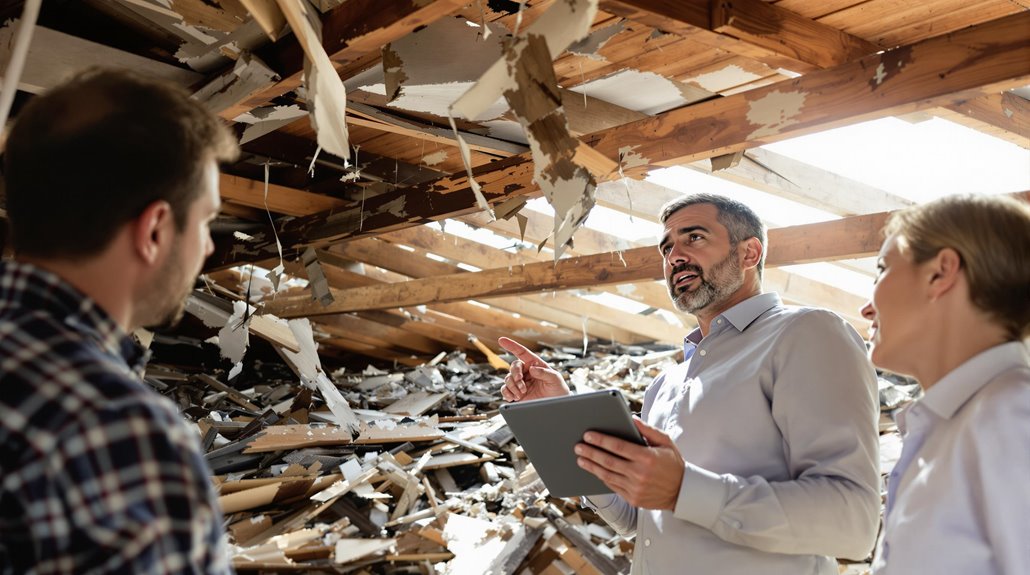
Consulting a public adjuster can bring significant benefits to policyholders traversing the complexities of property damage liability coverage.
With expertise in insurance claims, public adjusters can provide an objective damage assessment, identifying all relevant damages to guarantee a thorough claim submission.
Unlike claims adjusters' company interests, public adjusters work solely on behalf of policyholders to maximize their settlement amounts.
Expertise In Insurance Claims
Numerous intricacies inherent to insurance policies and procedures can complicate the claims process for policyholders, underscoring the value of expert guidance.
Studies show that claims handled by licensed public adjusters achieve up to 800% higher settlements compared to those without professional representation.
Public adjusters possess specialized knowledge of insurance policies, procedures, and legal requirements, ensuring policyholders receive all entitled benefits. Their expertise enables them to navigate complex claim strategies and policy negotiations, often resulting in higher settlements.
Key benefits of consulting a public adjuster include:
- Interpreting policy fine print and identifying potential areas of dispute
- Gathering and organizing necessary documentation, such as damage assessments and repair estimates
- Employing effective negotiation techniques to maximize claim settlements
Objective Damage Assessment
The specialized knowledge of public adjusters extends to providing objective damage assessments, an essential aspect of the claims process. Public adjusters conduct thorough evaluations of property damage, including visible and hidden damages, utilizing advanced tools such as moisture meters and infrared cameras. This objective assessment guarantees an unbiased evaluation of property damage, focusing on accurate documentation and fair compensation.
By meticulously documenting damage through photographs, videos, and detailed reports, public adjusters compile extensive evidence to support claims. Their expertise in various types of property damage, including fire, water, and storm damage, enables them to accurately estimate repair costs and negotiate with insurance companies to secure fair settlements.
This results in maximized compensation for policyholders, reduced disputes, and alleviated stress.
Licensed professionals must maintain independence from insurance companies while serving as advocates for homeowners throughout the claim process.
Streamlined Claim Process
By leveraging the expertise of a public adjuster, policyholders can considerably streamline the claim process, reducing the time and stress associated with managing a claim.
Public adjusters handle claims documentation, insurance negotiations, and communication with the insurance company, alleviating the burden from policyholders.
Key benefits of consulting a public adjuster include:
- Reduced time and stress: Public adjusters manage paperwork, negotiations, and communication, allowing policyholders to focus on rebuilding and recovery.
- Expert negotiation: Public adjusters are skilled in negotiating with insurance companies for fair settlements, countering tactics to minimize payouts.
- Professional communication: Public adjusters gather and organize necessary documentation, ensuring accurate and thorough claim presentation to the insurance company.
While public adjusters typically charge up to 10% commission of the final settlement amount, their expertise often results in significantly higher payouts compared to initial insurance offers.
Higher Claim Payouts & Settlements
Policyholders who enlist the services of a public adjuster often reap significant financial benefits, far exceeding the settlement amounts they would have secured on their own.
Studies have shown that policyholders who use a public adjuster receive higher settlements, with some securing up to 747% higher payments.
On average, homeowners who used a public adjuster received $22,266, compared to $18,659 for those who did not.
Public adjusters achieve these results through expert claim strategies and effective negotiation tactics, born out of their intricate understanding of insurance policies and the claims process.
By leveraging their expertise, policyholders can optimize their claim payouts and guarantee a more equitable settlement.
This guidance is invaluable for policyholders steering through the complex claims process.
Research indicates that public adjuster involvement typically increases settlement amounts by 20-50% through their specialized expertise in insurance policies and regulations.
About The Public Claims Adjusters Network (PCAN)
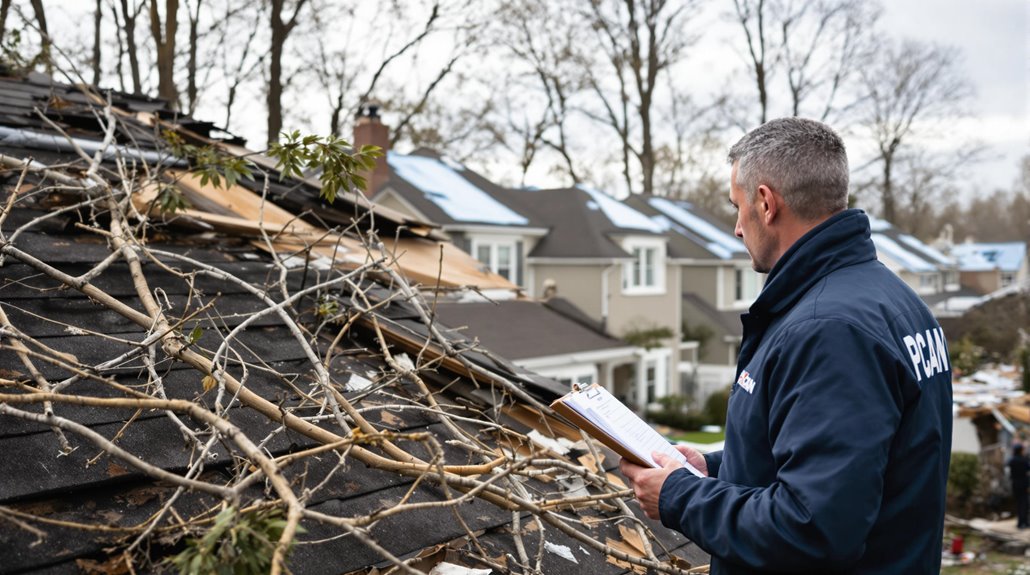
Expertise and advocacy converge in the domain of public claims adjusting, where the Public Claims Adjusters Network (PCAN) plays a pivotal role in facilitating efficient and fair claims handling.
As licensed professionals with extensive experience, PCAN members operate independently of insurance companies, providing unbiased support to residential and commercial clients.
By leveraging their expertise, PCAN adjusters help policyholders navigate complex claims processes and secure favorable settlements.
Members must maintain bi-annual license audits and meet strict professional standards to ensure quality service delivery.
Key PCAN characteristics include:
- Licensed professionals with extensive experience, ensuring expert claims guidance and representation.
- Independent operation, free from insurance company influence, enabling impartial advocacy on behalf of policyholders.
- All-encompassing services, encompassing policy analysis, damage assessment, and claims submission, to facilitate streamlined claims processing and maximize public adjuster advantages and claims adjusting benefits.
References
- https://www.nerdwallet.com/article/insurance/property-damage-liability
- https://www.thehartford.com/general-liability-insurance/what-does-general-liability-cover
- https://www.progressivecommercial.com/coverages/property-damage/
- https://www.dairylandinsurance.com/resources/property-damage-liability-insurance
- https://www.spetsasbuist.com/faqs/pdl-insurance-florida.cfm
- https://www.countryfinancial.com/en/planning/common-topics/insurance-coverage/what-is-property-damage-liability.html
- https://www.allstate.com/resources/car-insurance/property-damage-liability-insurance
- https://stantonins.com/property-damage-liability/
- https://www.bankrate.com/insurance/car/property-damage-liability/
- https://emotrab.ufba.br/wp-content/uploads/2020/09/Saldana-2013-TheCodingManualforQualitativeResearchers.pdf
